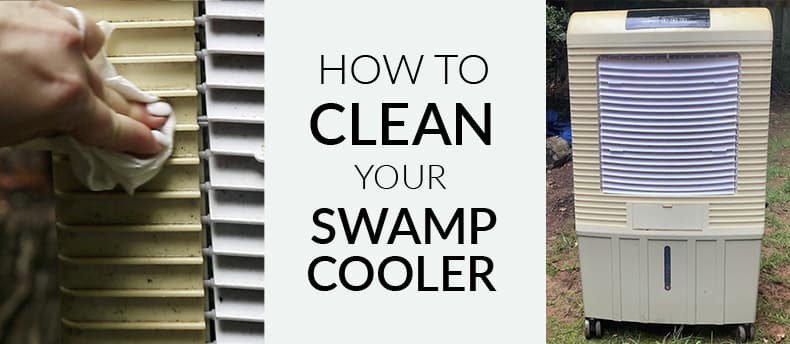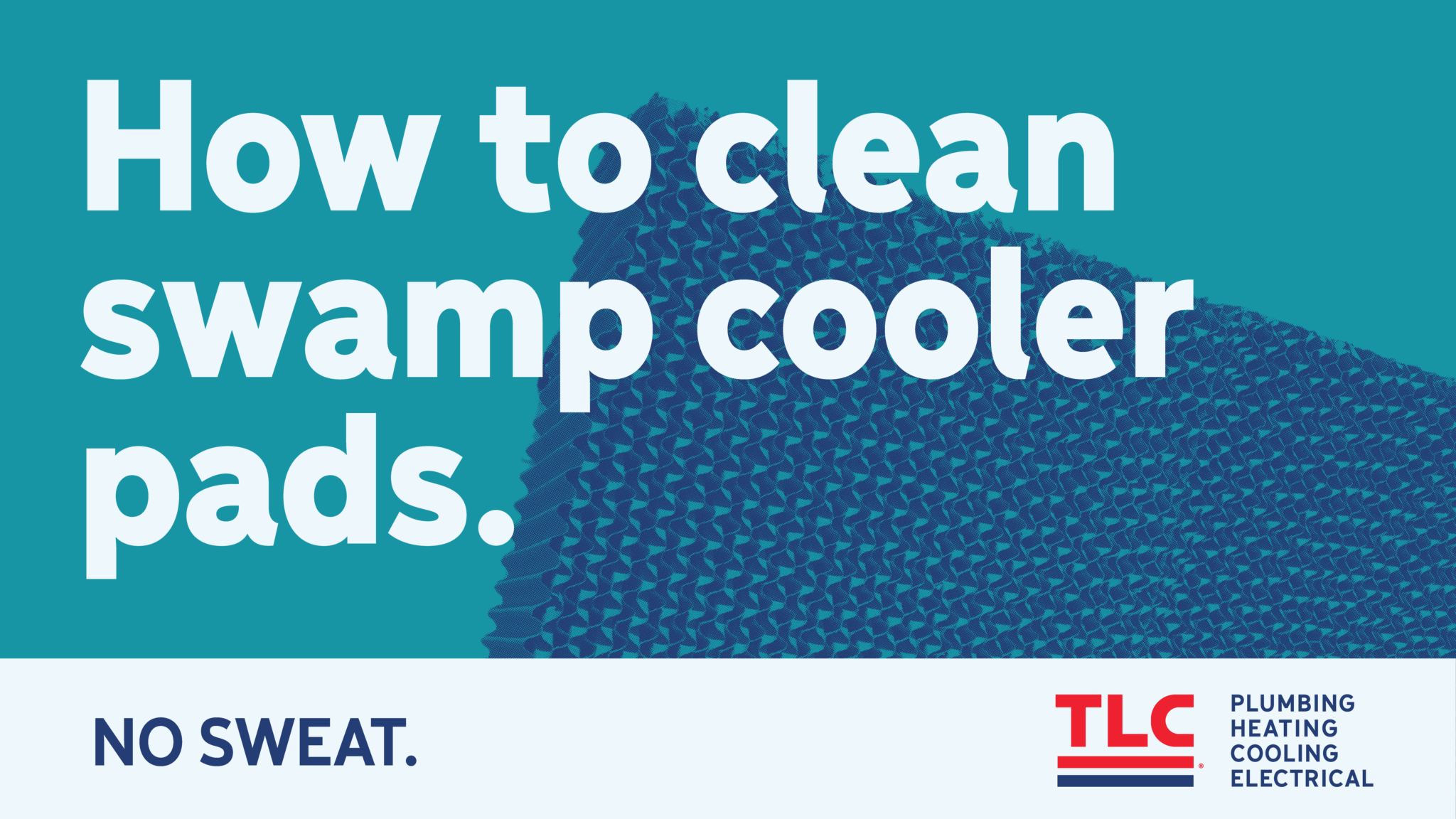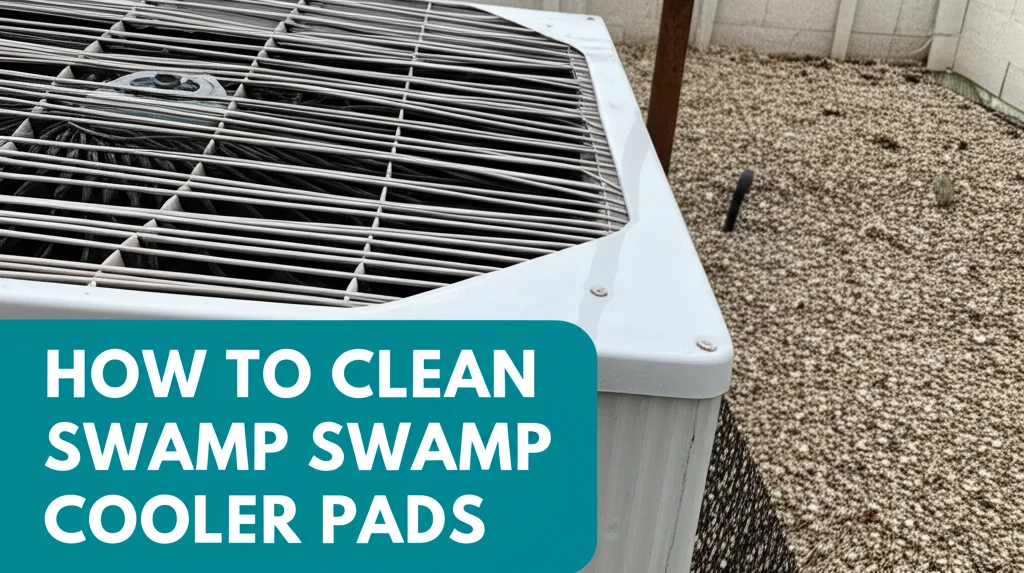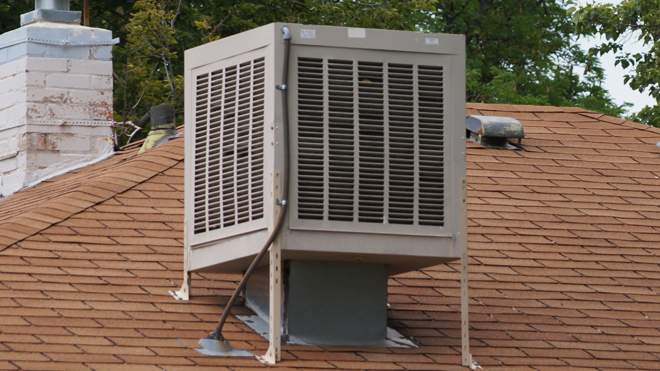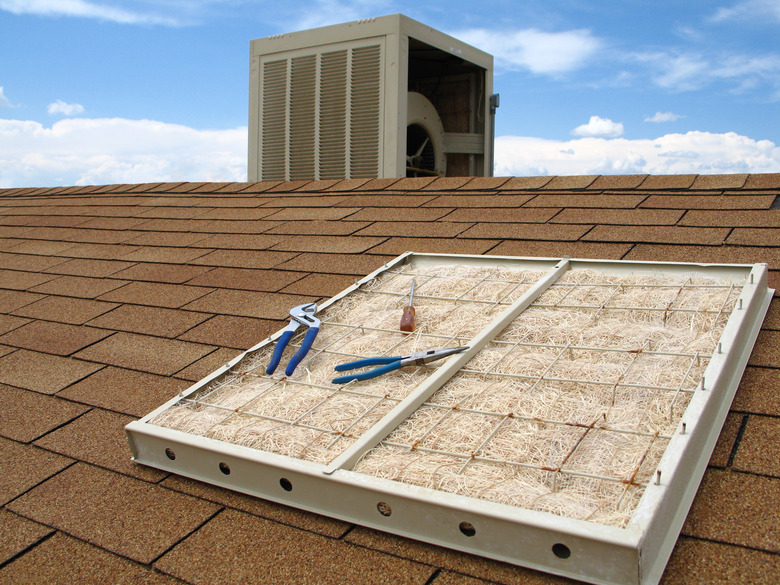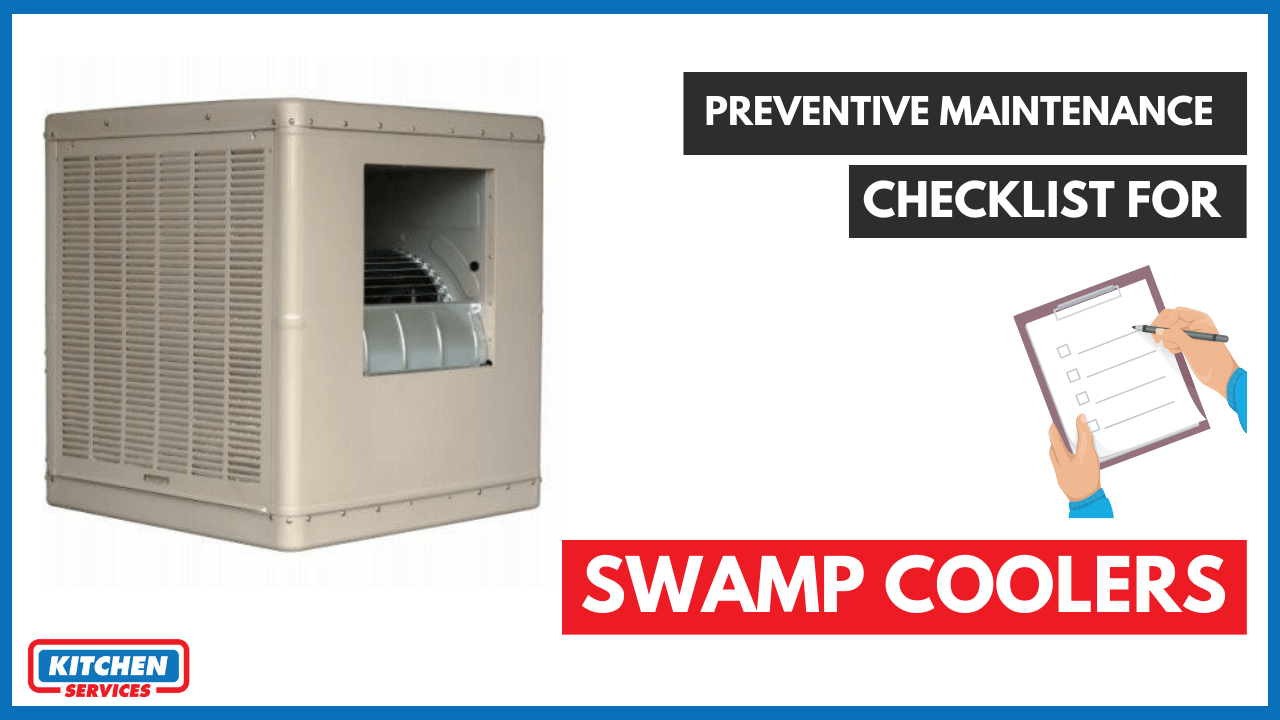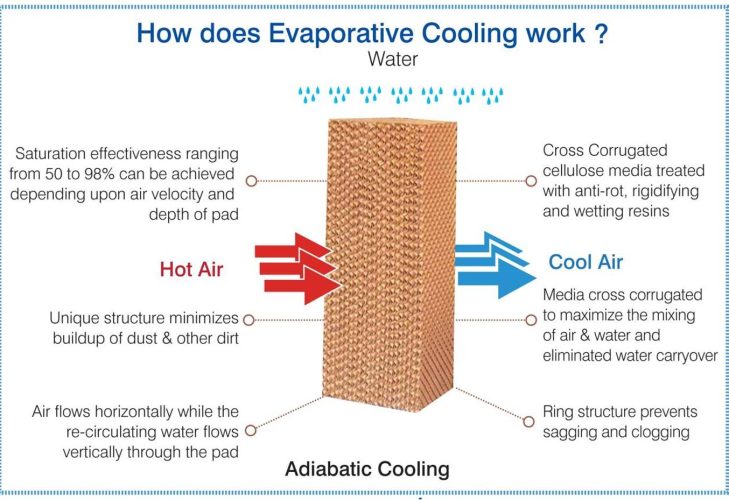How To Clean Swamp Cooler Pads
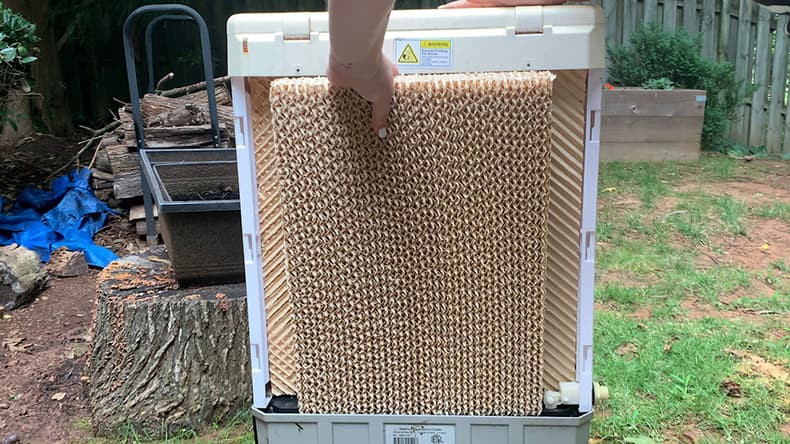
The desert air hangs heavy, shimmering with the promise of another scorching day. Inside, the familiar whir of the swamp cooler struggles to push cool relief through the vents. A faint, musty odor hints that something isn't quite right, a subtle reminder that the unsung heroes of summer—the cooler pads—are overdue for a little TLC.
Swamp cooler pads, the workhorses of evaporative cooling, often get overlooked until their efficiency wanes or unpleasant smells begin to permeate the air. Maintaining these pads through regular cleaning is essential for optimal cooler performance, improved air quality, and prolonged lifespan of the unit itself.
Understanding Swamp Cooler Pads
Evaporative coolers, also known as swamp coolers, have been a staple in arid climates for generations. Their simplicity and energy efficiency make them a cost-effective alternative to traditional air conditioning, relying on the natural process of evaporation to cool the air.
At the heart of this process are the cooler pads, porous materials designed to absorb and retain water. As hot, dry air is drawn through these moistened pads, the water evaporates, absorbing heat and lowering the air temperature. This cooled air is then circulated throughout the building.
The effectiveness of a swamp cooler hinges on the cleanliness and condition of its pads. Over time, these pads accumulate mineral deposits from the water, dust, pollen, algae, and other airborne contaminants. This buildup reduces the pad's ability to absorb water and impede airflow, diminishing the cooling capacity and creating an environment ripe for mold and bacteria growth.
Types of Swamp Cooler Pads
Several types of swamp cooler pads are available, each with its own characteristics and lifespan. The most common include:
Aspen pads: Made from shredded aspen wood fibers, these pads are the most affordable and widely used option. They offer good cooling performance but have a shorter lifespan, typically requiring replacement every season.
Cellulose pads: Constructed from treated paper or cardboard-like material, cellulose pads are more durable than aspen pads and provide better water retention. They generally last for one to three seasons with proper maintenance.
Synthetic pads: Made from durable synthetic fibers, these pads offer the longest lifespan and are resistant to algae and mold growth. While more expensive upfront, they can be a cost-effective option in the long run due to their longevity and reduced maintenance needs.
Why Cleaning Your Swamp Cooler Pads Matters
Cleaning your swamp cooler pads is not merely a cosmetic task; it's a crucial step in maintaining a healthy and efficient cooling system. Regular cleaning offers a multitude of benefits:
Improved Cooling Efficiency: Clean pads allow for optimal water absorption and airflow, maximizing the cooling effect. This translates to a more comfortable indoor environment and potentially lower energy bills.
Enhanced Air Quality: By removing accumulated dust, pollen, and mold, cleaning the pads helps to improve the overall air quality in your home, reducing allergens and irritants.
Extended Pad Lifespan: Regular maintenance prevents excessive mineral buildup and degradation, extending the lifespan of the pads and delaying the need for replacement.
Odor Elimination: Accumulated bacteria and algae can produce unpleasant odors. Cleaning the pads eliminates these sources of foul smells, leaving your home smelling fresh and clean.
Step-by-Step Guide to Cleaning Swamp Cooler Pads
Cleaning swamp cooler pads is a relatively simple process that can be accomplished with a few basic tools and materials.
Preparation: Turn off and unplug the swamp cooler. Disconnect the water supply to the unit.
Pad Removal: Carefully remove the cooler pads from their housings. Note their orientation for proper reinstallation later.
Initial Rinse: Use a garden hose to thoroughly rinse the pads, removing loose debris, dust, and dirt. A gentle spray nozzle is recommended to avoid damaging the pads.
Soaking (Optional): For heavily soiled pads, soak them in a solution of water and mild detergent or white vinegar for 30 minutes to an hour. This will help to loosen stubborn mineral deposits and grime.
Cleaning Solution Application: If soaking is not necessary, apply a cleaning solution directly to the pads. A mixture of water and white vinegar (1:1 ratio) or a mild dish soap solution works well. Avoid harsh chemicals or bleach, as these can damage the pads and release harmful fumes.
Gentle Scrubbing: Use a soft-bristled brush or sponge to gently scrub the pads, paying particular attention to areas with heavy buildup. Avoid excessive pressure, as this can damage the delicate fibers.
Thorough Rinsing: Rinse the pads thoroughly with clean water until all traces of soap or vinegar are removed. Ensure the water runs clear.
Disinfection (Optional): To further eliminate bacteria and mold, spray the pads with a solution of water and tea tree oil (a few drops per cup of water) or a diluted bleach solution (1 tablespoon of bleach per gallon of water). Rinse thoroughly after a few minutes if using bleach.
Drying: Allow the pads to air dry completely in a sunny location before reinstalling them. This will help to prevent mold and mildew growth.
Reinstallation: Once the pads are dry, carefully reinstall them in their housings, ensuring they are properly oriented.
System Check: Reconnect the water supply and plug in the swamp cooler. Turn it on and check for proper operation.
Tips for Maintaining Your Swamp Cooler Pads
In addition to regular cleaning, several other practices can help to maintain the health and efficiency of your swamp cooler pads:
Regular Inspections: Check the pads regularly for signs of damage, mineral buildup, or algae growth. Address any issues promptly.
Bleed-Off System: Install a bleed-off system to continuously drain a small amount of water from the cooler. This helps to reduce mineral buildup by preventing the concentration of minerals in the water reservoir.
Water Treatment: Consider using a water treatment solution specifically designed for swamp coolers to minimize mineral deposits and algae growth.
Seasonal Replacement: Replace the pads at the beginning of each cooling season, especially if you have aspen pads. This ensures optimal cooling performance and air quality.
Winterization: Prepare your swamp cooler for winter by draining the water reservoir, cleaning the unit thoroughly, and covering it to protect it from the elements.
The Bigger Picture
Maintaining your swamp cooler pads is more than just a chore; it's an investment in your comfort, health, and the longevity of your appliance. Neglecting this simple task can lead to decreased cooling efficiency, poor air quality, and costly repairs or replacements.
The EPA recommends regular maintenance of all cooling systems, including swamp coolers, to ensure optimal performance and energy efficiency.
By taking the time to clean and maintain your swamp cooler pads, you can enjoy the benefits of evaporative cooling for years to come, keeping your home cool and comfortable while saving energy and money.
As the sun dips below the horizon, casting long shadows across the desert landscape, the freshly cleaned swamp cooler hums contentedly, delivering a gentle breeze of cool, clean air. A small act of maintenance, a world of difference.
